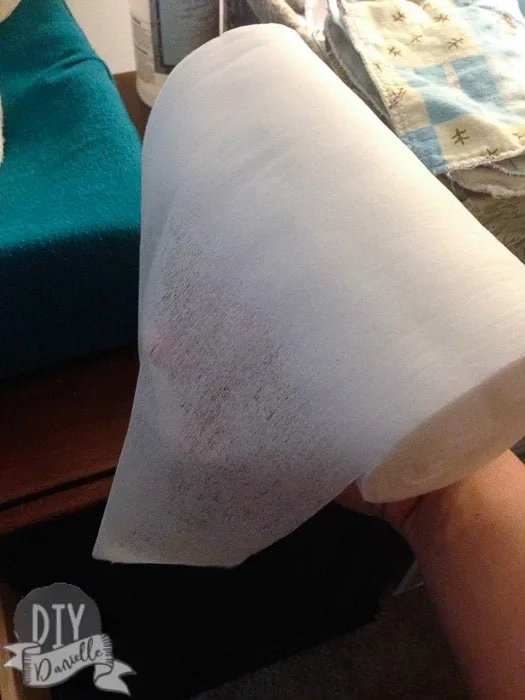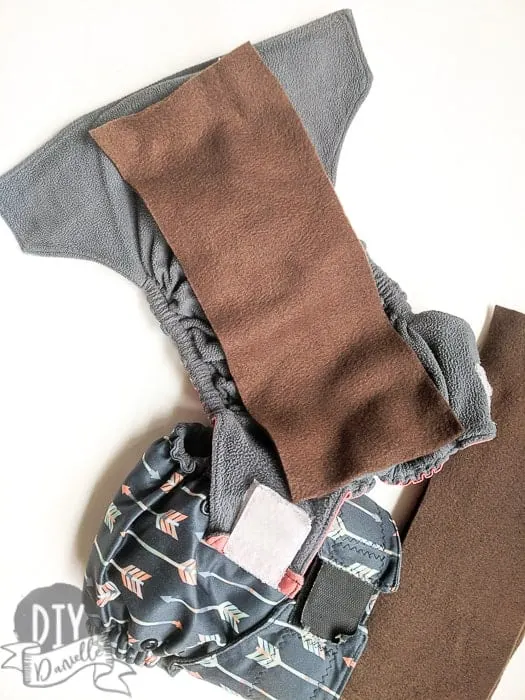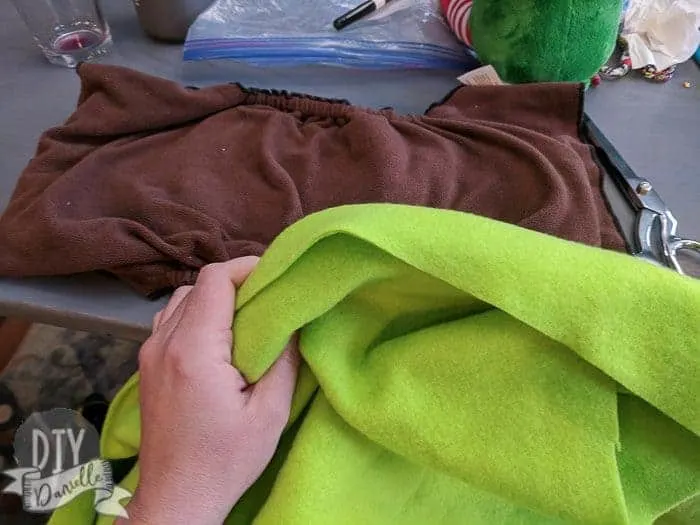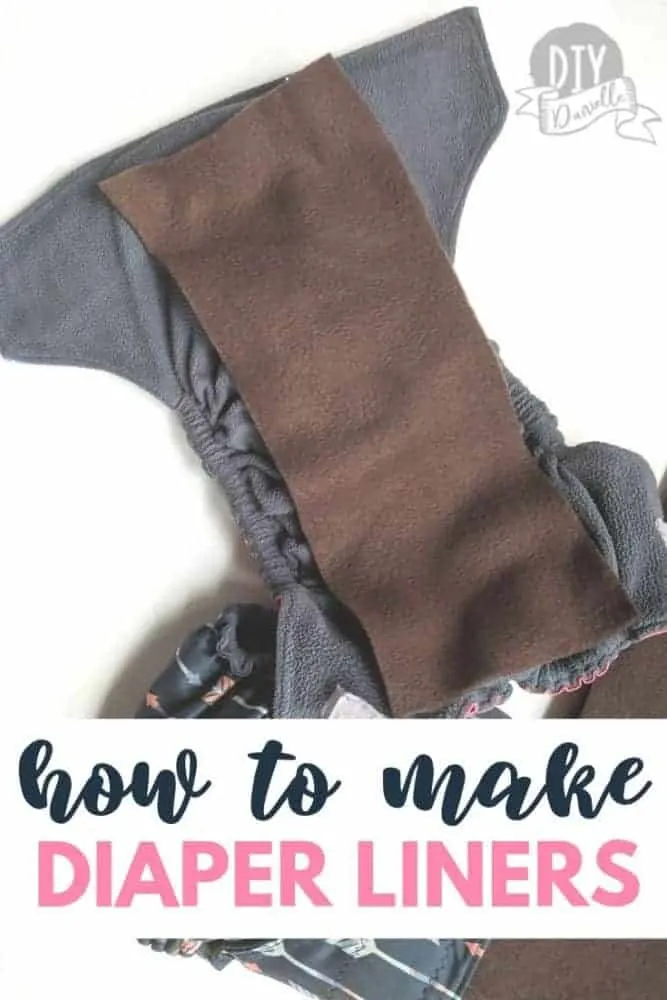
Discover the benefits of cloth diaper liners, the differences between disposable and reusable options, and learn how to make your own.
Navigating the world of cloth diapering can often lead you down the path of dealing with one of parenting’s less glamorous tasks: managing poop. It’s a reality for anyone venturing beyond the breastmilk phase into the realms of solid foods or formula. Cloth diaper liners, both disposable and reusable, have become a game-changer in making this task more bearable. This comprehensive guide will explore what cloth diaper liners are, their benefits, the differences between disposable and reusable options, and how you can make them yourself.
This post may contain affiliate links which may earn me commissions should you click through them and take certain actions. As an affiliate for Amazon, Cricut, xTool, Home Depot, and other sites, I earn from qualifying purchases. Please DIY carefully. View my full legal disclosures here.
Please read the whole post so you don’t miss any important information!
Originally published 7/17/2013. Updated 9/13/2019 and 3/9/24.
Once babies are through the breastmilk phase and move onto solids or formula, poop needs to be rinsed from diapers into the toilet. This can be hard or easy- sometimes you can just flip the poo into the toilet, and other times you need to actually swish and dunk to rinse them in the toilet. It’s not the most glamorous part of cloth diapering.
There’s a number of ways to make rinsing diapers a bit easier- but the one that I like the most is using a liner.
What Do Cloth Diaper Liners Do?
Cloth diaper liners serve as a protective barrier between your baby’s skin and the diaper, aiming to catch solid waste while allowing liquids to pass through. The primary benefit is simplifying the cleanup process; instead of rinsing the entire diaper, only the liner needs attention. This feature is especially helpful when dealing with non-breastmilk poop, which can be more challenging to manage.
In other words- Poop will, hopefully, get only on the liner so you can either toss the liner in the garbage or do the dunk/swish routine with the liner only. I find that cleaning off a liner is a lot easier than dealing with the whole diaper- which I need to remove the inserts from first (I use pocket cloth diapers).
In case you’re wondering- we use the dunk and swish method exclusively for cleaning our diapers. I have cloth diapered three kids and prefer this method to using a sprayer. It’s simple, it doesn’t use a lot of equipment, and I don’t need to worry about storing items like the Spray Pal, which is a method of containing all of the water splatter that happens when you use a sprayer. Sprayers and buckets work great- don’t get me wrong. It’s just not my thing.
One of my favorite things is that there aren’t any crevices to a liner… versus my diapers sometimes get poop near the elastic area and I find that area is harder to rinse off.
Liners also protect your diapers from creams and ointments that might affect the absorbency and lifespan of the cloth diaper. They keep the diaper from being ruined (there’s a lot of fixing to do if some chemicals get on the cloth diaper- some chemicals can effect the absorbency of the diaper which thereby causes leaking).
Disposable Liners for Diapers
Many people love disposable liners so I tried some with my first son. They work well– much better than I anticipated. What it boils down to, however, is that they are costly. They must be disposed of, not reused, and you need to remember that you’re disposing of them every diaper change… not just for poopy diapers.
When I bought them (I got the Bummis brands) they were $8 for 100 large liners or $0.08 per liner.

While they worked well for us, they did have TWO major issues:
- I cloth diapered to save money and this negated some of those savings.
- You need to dispose of them. This means more poopy garbage to deal with. One of the things I like about cloth diapers is that I can flush the poop, then wash everything. There’s no lingering poop in the garbage can (or wet bag or any other place).
Many of these liners claim to be flushable, but this is probably not a safe bet, particularly if you have septic. Even some popular toilet paper brands- and Kleenex- really shouldn’t be flushed because it doesn’t break down easily.
That’s the whole point of toilet paper- when water hits it, it breaks down quickly so it won’t cause clogs. I imagine this is just as relevant to public systems, but public systems clogs may not come back to — ahem— bite you in the butt like a septic backup will.
Needless to say, if you plan to use disposable liners then you need to plan for how you’ll store the poopy liners until garbage day.
The one time I STRONGLY prefer disposable liners is when baby has a rash and needs non CD-friendly cream. I’d rather just throw them away than worry about washing the reusable liners, seeing the chemicals can impact absorbency.
DIY Disposable Liners
If disposable liners are your thing, some folks like to make them to save money. Many just use heavier duty paper towels. This is a decent savings. You can read more about the effectiveness and comparison of the DIY liners vs. store bought liners here.
Reusable Diaper Liners
Reusable liners are my preferred option for every day use because they don’t cost as much to use. The reason they’re cheaper is that ANYONE can make their own, provided you have a good pair of scissors.
They do require you to rinse them out, just like a cloth diaper, before putting them through the wash. Some people choose to throw them out for particularly gross diapers. I just rinse them- again, I’m cheap thrifty and 3 kids in so I’m immune to grossness too tired to care. Haha.
How to Make Reusable Diaper Liners
Making your own reusable diaper liners is EASY. You need some scissors and some fabric. Fabric from upcycled blankets/clothing is fine!
Fabric Choice for Diaper Liners
For fabric, you want to use something that will let liquid pass through. For example, fleece is a good option for liners, but you need to test your fleece. Some fleece will repel liquids which means that if you put a few drops of water on top of them, the drops will stay on top of the liner and may even roll off to the side. THAT is not good for a liner. You want pee to pass through easily or you may end up with leaks.
Fleece for liners should let the water droplets pass through fairly quickly. This is called “wicking” and they wick the moisture through them to the absorbency below (the insert). It also provides a stay dry barrier so the baby doesn’t feel like they’re sitting in wet all night (or during the day).
From my experience, 100% polyester anti pill fleece works. But I always test because occasionally I run into cuts of fleece that repel liquid. I think blizzard fleece also did well. But I’ve had a few licensed fleece prints that will only repel. So just make sure to give it a test.
A note on testing your fabric: If the fabric is brand new or has been washed with fabric softener, it may repel EVEN IF it would normally be okay for diapers. You really need to wash the fabric a few times with cloth diaper safe detergent before testing it.
Making the Liners
All you need to do is cut your liners into the size and shape you want. I use rectangles and make sure to cut them so they fit MY DIAPERS. As you may know, I make most of my diapers.
I made some brown liners for my one size diapers that are 11×4.5″. They fit well, but I made green liners for my larger diapers.

These green liners are 5.25×13″.
Take your fleece. Wash it well.

Cut it into rectangles that are slightly less wide than your diaper… I like mine to fit between the elastic area. I don’t want the fleece liner peeking out when the diaper is on.
Here’s a quick and unnecessary video…
I recommend cutting a few and seeing how you like the size and shape. If they work, repeat and make a bunch. If not, adjust the size or shape and experiment a bit.
Fleece doesn’t fray so you don’t need to worry about sewing the edges.
Just pop those liners in your cloth diapers before you put the diaper on baby. They don’t ALWAYS catch everything, but I find they work most of the time.
When you’re done with the fleece and have enough liners, you can use the remaining fleece fabric for other projects like these dog tug toys or ice pack covers!
Disposable Liner Options to Buy
Disposable Cloth Diaper Liners
- Gentle and Soft
- Chlorine and Dye-Free
- Unscented
- Rayon Made From Bamboo Inserts
- (Set of 4) 400 Liners
- Biodegradable – Soiled liners should be disposed of in the garbage; do not flush
- Compatible with any cloth diapering system
- Average use is 4 to 6 boxes of 100 liners per month
- 100 percent viscose: breathable, yet absorbs moisture
- BPA, PVC, Vinyl, Phthalate and Lead free
- 100% rayon
- Unscent Diaper Liners- Fragance Free and Chlorine Free
- (4PK) 400 Count
- 100 count per roll, 12" x 7.5" liners
- Free of harsh synthetic chemicals, dyes, fragrance, and preservatives.
- Viscose made from bamboo
- Biodegradable
- Size:7"x12"per sheet, 100 sheets per roll
Reusable Liner Options to Buy
Reusable Cloth Diaper Liners
Reusable liners can be washed!
Conclusion
Cloth diaper liners, whether disposable or reusable, offer a practical solution to managing the less appealing aspects of cloth diapering. By choosing or making liners that best fit your lifestyle and budget, you can enjoy the benefits of cloth diapering without some of the messier challenges. With this guide, you’re now equipped to make an informed decision on which type of liner suits your needs and how to easily create your own.
Please share and pin this post! If you make this project, share it in our Stuff Mama Makes Facebook Group. We have regular giveaways for gift cards to craft stores. You can also tag me on Instagram @doityourselfdanielle; I love seeing everything you make!









Theszmommy
Saturday 8th of October 2022
I have a blanket -new it says fleece throw (comfort bay-Dollar general brand) i havents washed it yet but at the back it says fabric content is 100% polyester. Will this make a good diaper liner? Isnt it polyester isnt good to touch baby skin? TIA